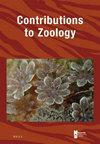Comparative home range size and habitat selection in provisioned and non-provisioned long-tailed macaques (Macaca fascicularis) in Baluran National Park, East Java, Indonesia
IF 2.2
2区 生物学
Q1 ZOOLOGY
引用次数: 12
Abstract
The effect of food provisioning on ranging patterns of long-tailed macaques (Macaca fascicularis) in non-anthropogenic areas is largely unknown, as most published studies have focused on urban macaques. In this study, we quantified habitat selection, daily path length and home range size in long-tailed macaques in Baluran National Park, East Java, Indonesia, comparing a non-provisioned to a provisioned group. To track the groups, we deployed six GPS-collars on females in both groups, of which only two collected data. Home range size (90% Auto-correlated Kernel Density Estimate) was 23 times smaller for the provisioned group (10.62 ha) than the non-provisioned group (249.90 ha). Home range size and area changed from dry to wet season for the non-provisioned group. Provisioned group home range size correlated negatively with number of visitors in the national park. Daily path length was significantly higher for the non-provisioned group. The provisioned group preferred settlements, where most of the provisioning occurred, and avoided areas with invasive acacia (Acacia nilotica). The non-provisioned group also avoided invasive acacia, preferred secondary forest in the dry season and restored savannah in the wet season. Food provisioning can affect macaque spatial ecology, by shaping daily travel length and home range size, and changing patterns of habitat selection. Even tourism in a managed national park, where provisioning is strictly prohibited although not always enforced, has significant consequences for animal behaviour and their natural ecosystems.印度尼西亚东爪哇Baluran国家公园中有给养和无给养的长尾猕猴(Macaca fascicularis)的家庭范围大小和栖息地选择比较
食物供应对非人类活动地区长尾猕猴(猕猴)活动模式的影响在很大程度上是未知的,因为大多数已发表的研究都集中在城市猕猴身上。在这项研究中,我们量化了印度尼西亚东爪哇巴鲁兰国家公园长尾猕猴的栖息地选择、每日路径长度和栖息地范围大小,比较了非供应组和供应组。为了追踪这些群体,我们在两组女性身上都部署了六个GPS项圈,其中只有两个收集了数据。配置组(10.62公顷)的家庭范围大小(90%自相关内核密度估计)是未配置组(249.90公顷)的23倍。非供应组的家庭范围大小和面积从旱季变为雨季。提供的团体住宅范围大小与国家公园的游客数量呈负相关。未配置组的每日路径长度明显更高。供应组更喜欢大部分供应发生的定居点,并避开入侵性金合欢(acacia nilotica)地区。非供应组还避免入侵金合欢树,在旱季更喜欢次生林,在雨季恢复稀树草原。食物供应会影响猕猴的空间生态,影响其日常旅行长度和栖息地大小,并改变栖息地选择模式。即使是在一个有管理的国家公园里进行旅游,也会对动物行为及其自然生态系统产生重大影响,因为那里的供应是严格禁止的,尽管并不总是强制执行。
本文章由计算机程序翻译,如有差异,请以英文原文为准。
求助全文
约1分钟内获得全文
求助全文
来源期刊

Contributions to Zoology
生物-动物学
CiteScore
4.00
自引率
4.50%
发文量
16
审稿时长
>12 weeks
期刊介绍:
Contributions to Zoology solicits high-quality papers in all systematics-related branches of comparative zoology (including paleozoology). Preference will be given to manuscripts dealing with conceptual issues and to integrative papers (e.g., ecology and biodiversity, morphology and phylogeny and character state evolution, phylogeny and historical biogeography, systematics and bioinformatics, bioinformatics and biodiversity, habitat disturbance and biogeography, etc.). Reviews and alpha-taxonomic contributions are considered for publication, but acceptance will depend on their high quality and exceptional nature.
 求助内容:
求助内容: 应助结果提醒方式:
应助结果提醒方式:


